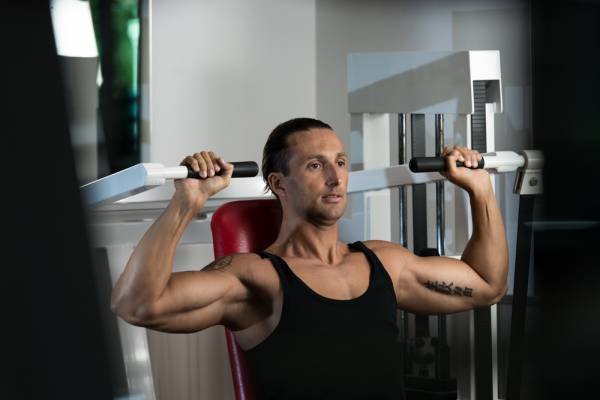In the last week I have had two people become extremely confused about where they were and what they should have been doing. I don’t mean they were suffering from dementia and couldn’t figure out whether to have their shoes on or not. I’m talking about the understanding of where they were physically and what was needed to get them to their goal. And the problem wasn’t as simple as, “My goal is to run at pace X for Y,” but far more complicated.
You Don’t Even Know What’s Wrong With You
For example, one lady came to me complaining about a variety of things. These things included not being able to squat, weak glutes, and her feet hurting if she ran more than two kilometers at a time. These were all her words that she said to me over the phone. And then the next thing out of her mouth was that she wanted to run a fast half marathon and she wanted me to check over her running form and suggest a pair of shoes that might stop her feet from hurting.
In my head I got an instant image of that Heath Ledger meme as the Joker where he says, “Not sure if serious.” I mean, your feet your hurt after a few minutes of running and you think an appropriate goal right now is to run for an hour and a half? We could just speed up the process and I could just hit your feet with a bat right now if your goal is to end up with really sore feet.
This was only a few days after another runner came to me who was honestly a complete mess – with an asymmetrical stride pattern, a body that was dysfunctional in just about every way I could measure, and a sore calf. Somehow the calf was the real problem and that was what her team was focused on fixing. They thought her calf was what was holding her back from running 80km/week.
Never mind that she couldn’t even breathe properly, and no, that’s not an exaggeration. Never mind that she had nearly zero movement to one side and about fifty percent of what she should have had the other way. It must be the calf.
Your Health Is the Problem
People often come through the door with a goal that is performance related. But the fix isn’t fitness or performance related. It’s health related. If you have a bulged disc, then you don’t get to have a performance goal until you have fixed your health problem. If your feet are so dysfunctional that you can’t stand being on them for any length of time without them hurting, then you have a health problem, too. And if you can’t breathe, and your entire body is locked up in an effort to help you get life-giving oxygen, then you most certainly don’t get to have a performance goal until you learn how to get some oxygen into your body in a way that won’t cripple you.
Ido Portal has an amazing way of making this simple to understand. Before we can be a specialized human, like an athlete, we must first be a human being. That means we should be able to twist, bend, squat, move pain free, and be in good general health. Human being, before human doing.
But many people have confused this due to fitness machines and gadgets. We’ve found ways to add strength or conditioning that actually need no underlying human qualities. If you can’t brace and stabilize the body to press overhead, that’s no problem because over there we have a machine that allows you to sit, braced by the seat, and move the load in a fixed place No tricky stabilizing or other skills needed. Just do, do, do on this machine and see what happens. For many, they end up looking good, but with bodies that aren’t very good for anything other than standing still. By losing their ability to lose, they lose the thing that actually makes us human.

The First Goal of Training Is Health
The first goal of training has to be to improve health. If you’re not better because of training, then you’re doing it wrong. And you most certainly shouldn’t be causing health problems during training. It’s one thing to be hurt by a tackle playing football and another thing entirely to suffer a disc prolapse during a controlled training session.
(And for all the people who say that you must walk the edge and push the boundaries in training, I ask two questions: First, are you actually competing at a level where ruining your health has a substantial enough financial payoff to make up for being disabled for life? And second, if your argument is that you need to expose the body to the same risk in training as you face in competition, then how come boxing trainers don’t just knock their athletes out in training so they can experience it, too?)
Going back to my runners for a moment, I asked them both whether it was more important to run now, maybe for a year or two, before the problems became so bad that they would likely prevent ever running again, or whether it was better to take six to twelve months off now, fix their health problems, and then be able to run for the rest of their lives. Sadly, neither answered with what I thought was a smart answer.
Because the fitness world will find ways to “hack” performance, to offer shortcuts, to help you sit and grind when you can’t stand, it is incomprehensible to many that you may need to cease all current training to address your problems. Gray Cook has a magnificent saying, “You can’t stack performance on top of dysfunction.” Well, you can. And I see clients every week who try. What he really should be saying is that “You can’t stack long-term performance on top of dysfunction.”

You Need a New Approach
For some people this concept will be a major paradigm shift. It may mean many months of having to address some underlying issues that may have been there for decades. So, the next thing I get at this point is, “But if I can’t X, then I’ll gain weight.” Well, maybe that means you’ll have to learn to address your diet, too, and eat like a responsible adult rather than relying on X to keep you in shape. And won’t addressing your diet go a long way towards developing better health? I’d say it’s a coincidence, but I don’t want to downplay the importance of something seemingly as simple as diet on overall health.
I know many will feel like they can bluster their way through things. Try to outwork it. You know, just add an extra mobility session, or maybe watch MWOD a bit and find the secret missing ingredient to fix all their ailments. To those people, I say go for it. Go nuts. Just realize that you’re also going to spend a lot of time at the physiotherapist’s, and later on with the orthopaedic surgeon, and then again with the physiotherapist. Then you’ll probably go back to what you were doing and repeat the process.
If you want to be one of those recreational athletes that feels like you’re somehow tougher or more committed because you train through bad injuries, then that’s on you. But know that the rest of your friends are asking themselves why you don’t just sort it out now so you can enjoy the rest of your life pain free.
Health before fitness. Fitness before performance. Don’t try it the other way around or all you’ll be doing is sending your doctor’s kids to school.
Photos courtesy of Shutterstock.






